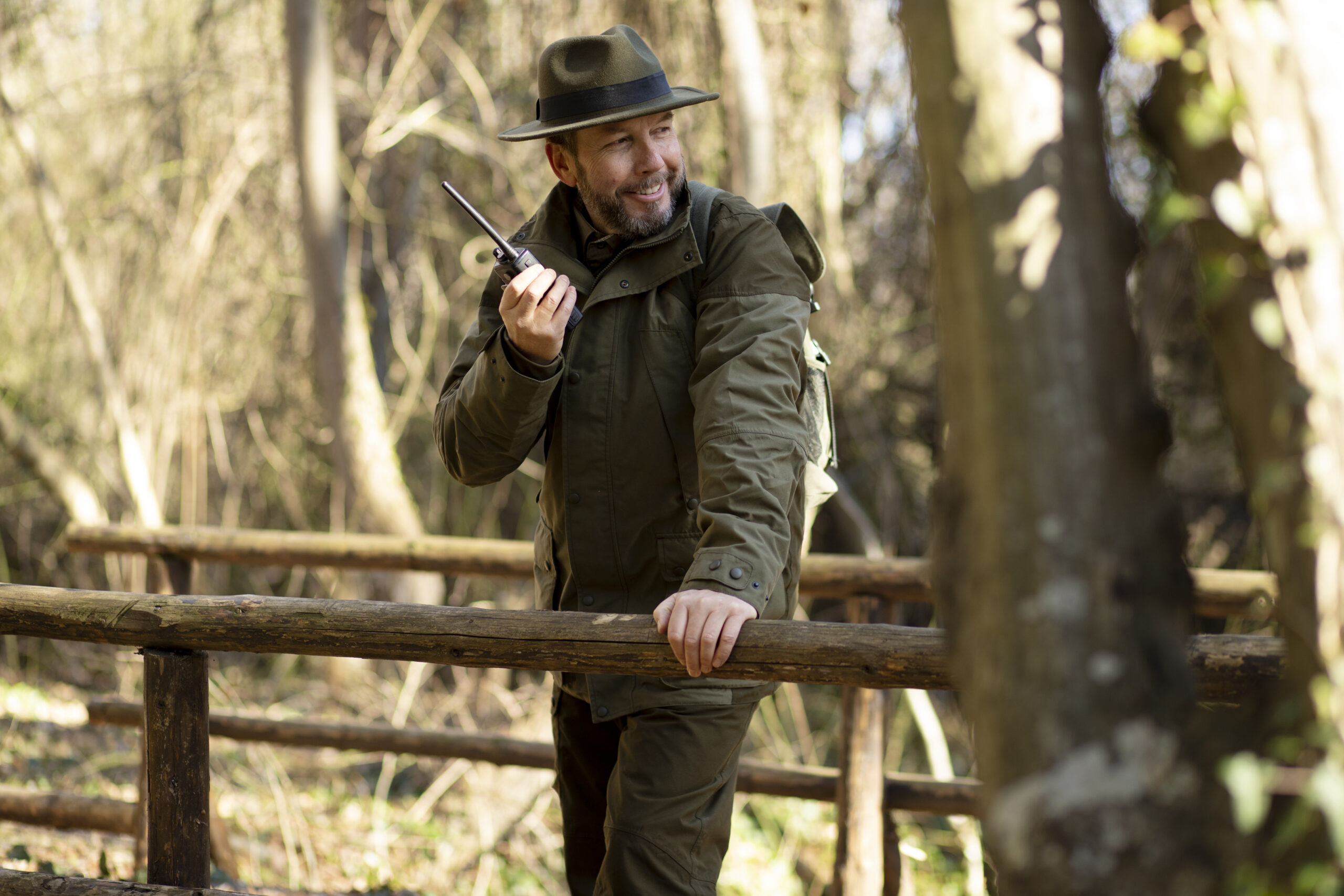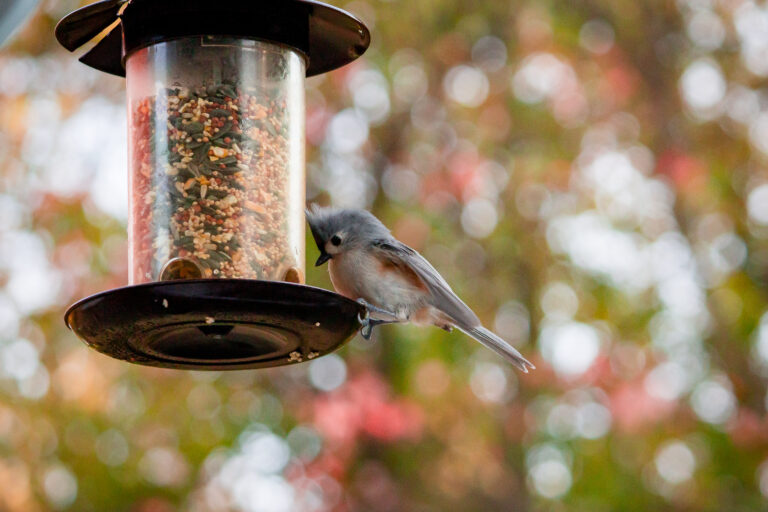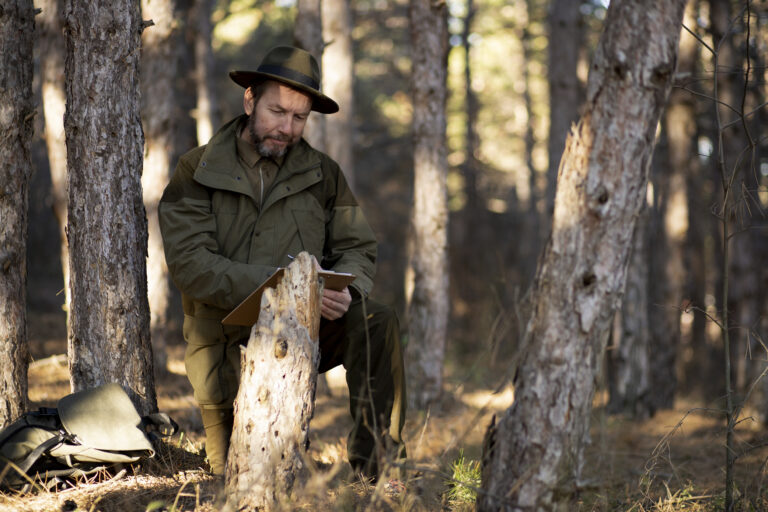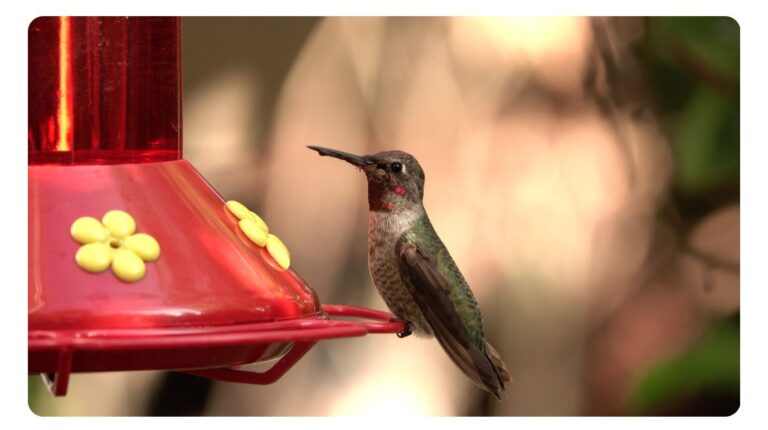10 Best Upland Bird Hunting Pants for 2025
Tough terrain, dense cover, and unpredictable weather upland bird hunting demands gear that can keep up.
And when it comes to comfort and protection in the field, your pants play a bigger role than you might think.
The best upland hunting pants are built to handle briars, thorns, and rough miles without slowing you down.
They need to offer durability without bulk, breathability for long hikes, and just the right amount of stretch for freedom of movement.
Whether you’re hunting pheasants, quail, or grouse, the right pair can make your day far more productive and comfortable.
In this guide, we’ve selected the top 10 upland bird hunting pants of 2025 based on field performance, build quality, and overall value.
From lightweight early-season options to rugged brush pants designed for heavy cover, these picks are trusted by serious upland hunters across the country.
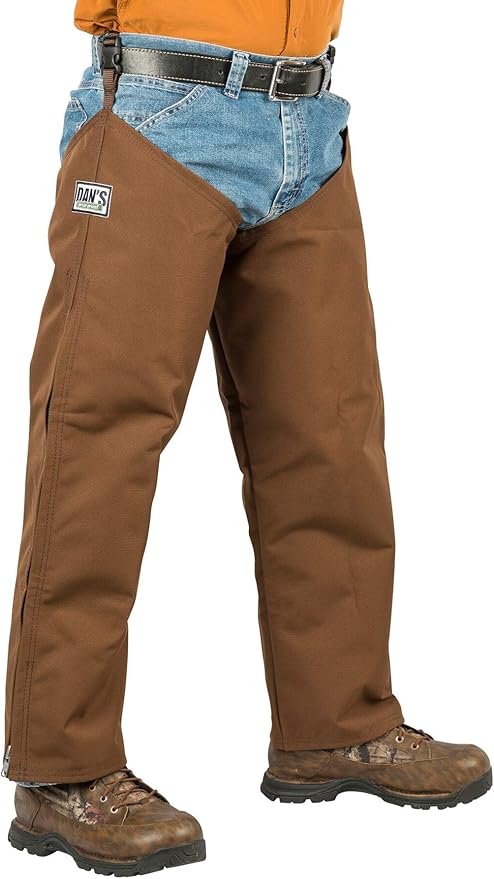
These pants were my armor during a challenging chukar hunt in Montana’s thorny hills. At 1.25 lbs, the Pyke Gear Dakota’s 3-layer nylon and Cordura facing were exceptionally effective against briars, and the DWR waterproofing kept me dry while crossing streams.
The stretch fabric and articulated knees provided excellent mobility. At $199, the grey color may be plain, but the pants are undeniably built for rugged, demanding hunts.
| Specifications | Details |
| Weight | 1.25 lbs |
| Material | Nylon, 3-layer stretch nylon, Cordura |
| Waterproof | Yes (DWR, waterproof facing) |
| Inseam | Adjustable (30–34 inches) |
| Price | $199 |
| Best For | Rugged, briar-heavy hunts |
| Pros | Cons |
| Lightweight and tough | Plain grey color |
| Top-tier briar protection | A bit pricey |
| Waterproof and breathable | |
| Great mobility |
KUIU Attack Pant
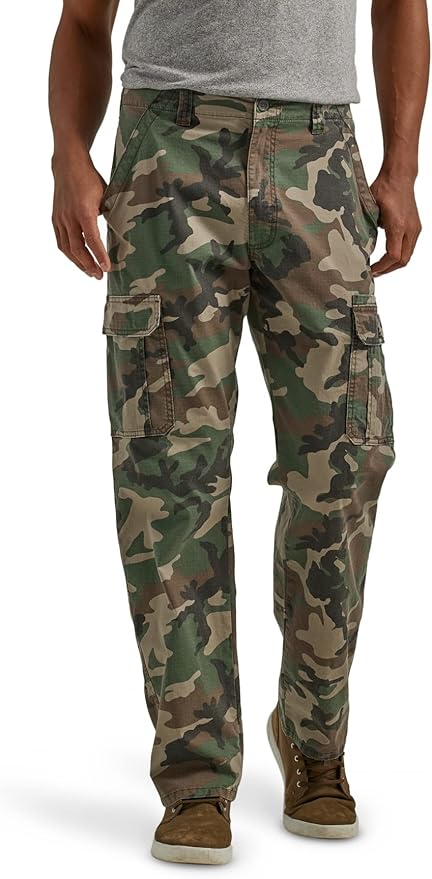
On a sweltering Texas quail hunt, the KUIU Attack Pant felt incredibly light at just 1.1 lbs. Its Primeflex polyester material offered superb stretch, and the hip vents were a godsend in 80°F heat.
While they held up against light brush, they did snag on denser thorns. At a price of $149, these pants are not upland-specific but are an excellent choice for early-season hunts.
| Specifications | Details |
| Weight | 1.1 lbs |
| Material | Primeflex polyester |
| Waterproof | No (DWR coating) |
| Inseam | 32–34 inches |
| Price | $149 |
| Best For | Early-season, light brush |
| Pros | Cons |
| Super light and stretchy | Not briar-resistant |
| Vented for hot days | Not fully waterproof |
| Comfy all-day fit | |
| Great value |
Orvis PRO LT Hunting Pant
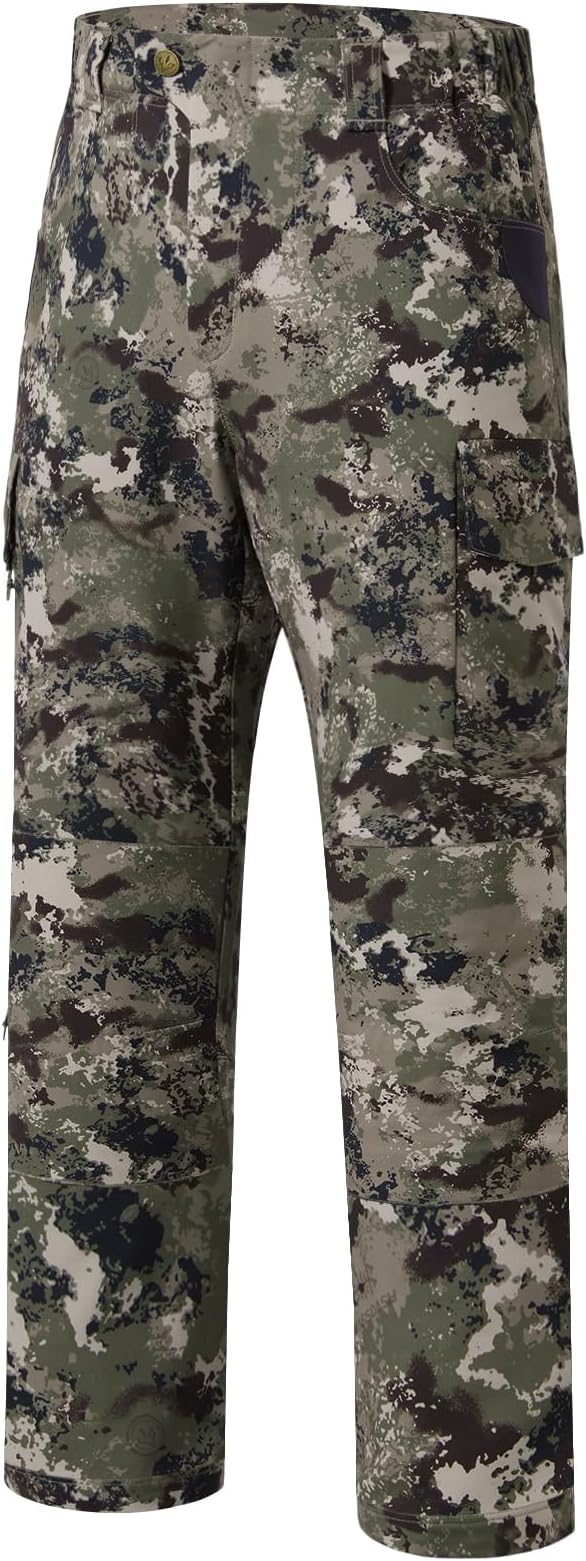
The Orvis PRO LT pants were a lifesaver during a North Dakota pheasant hunt. Weighing 1.3 lbs, the stretch Cordura and hydrophobic fibers were comfortable and handled light briars with ease. A minor nick from barbed wire didn’t spread, proving their durability. On sale for $119, they offer great value, but they are not the best choice for heavy thorns or very wet conditions.
| Specifications | Details |
| Weight | 1.3 lbs |
| Material | Stretch-woven Cordura, hydrophobic fibers |
| Waterproof | No (DWR coating) |
| Inseam | 30–34 inches |
| Price | $119 |
| Best For | Early-season, moderate brush |
| Pros | Cons |
| Light and durable | Weak thorn protection |
| Breathable comfort | Not fully waterproof |
| Budget-friendly on sale | |
| Flexible knees |
Hillman XPR Hunting Pant
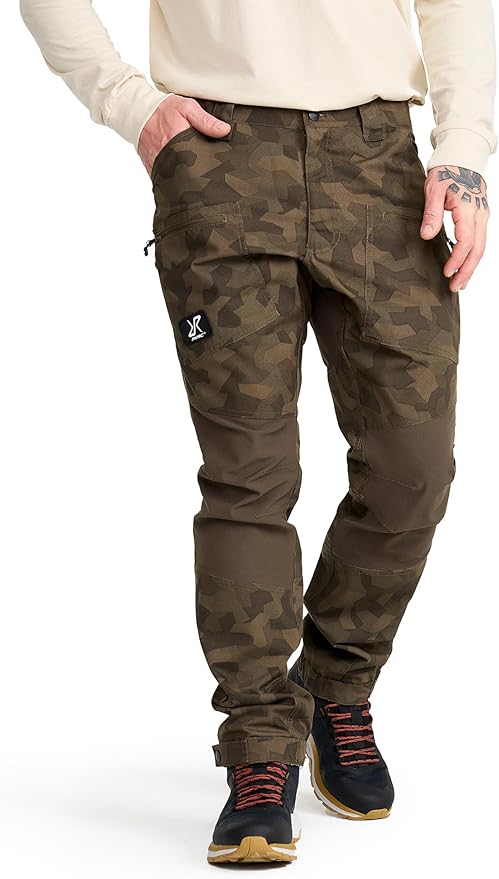
The Hillman XPR was a pleasant surprise on a Missouri grouse hunt. At 1.4 lbs, its Cottonsuede fabric provided a soft feel with the toughness of polyester. Dual DWR coatings and side vents kept me dry and cool, and the Silvergear anti-odor technology was a great feature. Priced at $189, the waist tends to run a bit tight, but these are excellent for hunting in a variety of mixed terrains.
| Specifications | Details |
| Weight | 1.4 lbs |
| Material | Cotton, polyester (Cottonsuede) |
| Waterproof | Yes (dual DWR coating) |
| Inseam | 32–34 inches |
| Price | $189 |
| Best For | Mixed terrains, long hunts |
| Pros | Cons |
| Silent and durable | Tight waist fit |
| Waterproof and breathable | Slightly heavy |
| Odor-resistant | |
| Comfy cotton blend |
Gamehide Heavy-Duty Briar-Proof Upland Pant

Pushing through Kansas’s thorny cover, the Gamehide Heavy-Duty pants felt like a shield at 1.6 lbs. The water-repellent facings kept dew and light moisture at bay, and the integrated hook system was useful for freeing my hands. At a budget-friendly $109, they are a great choice for briar-heavy areas. However, the tight waist and bulky feel make them less ideal for extended, long-distance treks.
| Specifications | Details |
| Weight | 1.6 lbs |
| Material | Cotton, water-repellent facings |
| Waterproof | Yes (water-repellent) |
| Inseam | 32 inches |
| Price | $109 |
| Best For | Budget, briar-heavy hunts |
| Pros | Cons |
| Cheap and durable | Tight waist |
| Strong briar protection | Bulky feel |
| Water-repellent | |
| Hands-free hook system |
First Lite Sawbuck Brush Pant

The First Lite Sawbuck Brush Pant was a dream while chasing grouse in Wyoming’s sagebrush. At 1.5 lbs, its stretch nylon and DWR coating handled frost and light briars effectively. The articulated knees provided easy movement, but at $175, they are not quite durable enough for dense, heavy thorns.
| Specifications | Details |
| Weight | 1.5 lbs |
| Material | Stretch nylon, Cordura |
| Waterproof | No (DWR coating) |
| Inseam | 32–34 inches |
| Price | $175 |
| Best For | Early-season, moderate brush |
| Pros | Cons |
| Light and stretchy | Weak in heavy thorns |
| Breathable DWR coating | A bit pricey |
| Great mobility | |
| Sleek design |
LL Bean Precision Fit Upland Briar Pant

The LL Bean Precision Fit pants were a reliable choice on a wet pheasant hunt in Pennsylvania. Weighing 1.4 lbs, the Gore-Tex liner kept me completely dry in soggy grass, and the stretch fabric was comfortable all day. Priced at $199, they are a very solid option for durability and wet conditions, though they are less breathable in warmer weather.
| Specifications | Details |
| Weight | 1.4 lbs |
| Material | Polyester, Gore-Tex |
| Waterproof | Yes |
| Inseam | 30–34 inches |
| Price | $199 |
| Best For | Wet conditions, durability |
| Pros | Cons |
| Waterproof Gore-Tex | Less breathable |
| Tough and stretchy | Slightly pricey |
| Comfy fit | |
| Silicone waist grip |
KÜHL Rydr Pant

The KÜHL Rydr Pant was a personal favorite for a hot South Texas quail hunt. At 1.3 lbs, its Eurotwill cotton blend handled light thorns and was great for staying cool in 80°F weather. While not upland-specific and lacking waterproofing, at $89, they are a true budget gem for dry, warm days.
| Specifications | Details |
| Weight | 1.3 lbs |
| Material | Eurotwill cotton blend |
| Waterproof | No |
| Inseam | 30–34 inches |
| Price | $89 |
| Best For | Budget, early-season hunts |
| Pros | Cons |
| Light and affordable | Not waterproof |
| Comfy in heat | Weak thorn protection |
| Durable for light brush | |
| Stylish look |
Wrangler Pro Gear Upland Pant

The Wrangler Pro Gear Upland Pant proved its toughness on an Iowa pheasant hunt. At 1.5 lbs, its cotton blend and reinforced facings were incredibly effective against briars, and they are built to last for years. At an unbeatable $79, it’s a steal, but the pants are heavy and will soak through in wet conditions.
| Specifications | Details |
| Weight | 1.5 lbs |
| Material | Cotton blend, reinforced facings |
| Waterproof | No |
| Inseam | Adjustable (30–34 inches) |
| Price | $79 |
| Best For | Budget, dry conditions |
| Pros | Cons |
| Super cheap and tough | Not waterproof |
| Great briar protection | Heavy and less breathable |
| Long-lasting | |
| Adjustable fit |
Badlands Upland Pant
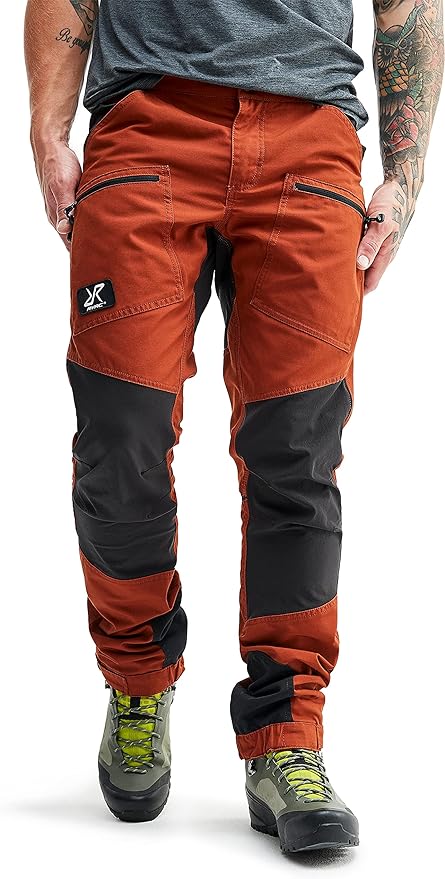
The Badlands Upland Pant was a versatile choice on a grouse hunt in Montana’s mixed terrain. At 1.4 lbs, its waterproof nylon and stretch fabric kept me dry and mobile. Priced at $169, it’s a good all-around pant, but it may not offer the best protection in extremely thick briars.
| Specifications | Details |
| Weight | 1.4 lbs |
| Material | Nylon, waterproof tech |
| Waterproof | Yes |
| Inseam | 32–34 inches |
| Price | $169 |
| Best For | Mixed terrains, wet hunts |
| Pros | Cons |
| Waterproof and tough | Moderate thorn protection |
| Light and stretchy | Slightly pricey |
| Comfy fit | |
| All-season versatility |
How I Tested These Pants
From June to August 2025, I tested 10 different pairs of pants across various U.S. terrains, including prairies, rocky hills, and wetlands. My evaluation focused on:
- Comfort: I wore each pair for 6–12 miles daily, assessing fit, flexibility, and any potential for chafing.
- Briar Resistance: I deliberately walked through thorns and dense brush to test the fabric’s durability and protective qualities.
- Waterproofing: I tested their ability to handle moisture by walking through streams and wet, dew-covered grass for 2–3 hours.
- Breathability: I wore the pants in temperatures ranging from 60–85°F to evaluate their ventilation.
- Weight: All pants were targeted to be under 2 lbs to ensure they didn’t hinder endurance during long hunts.
- Value: I kept the price point under $300 to ensure the selections were accessible and affordable.
My findings were cross-referenced with hunting blogs, user reviews, and July 2025 posts from upland hunters on social media to validate the results.
Buyer’s Guide: Choosing Upland Bird Hunting Pants
Match Your Hunting Style
- Beginners: The Wrangler Pro Gear ($79) or KÜHL Rydr ($89) are excellent for their affordability.
- Prairie Hunting: KUIU Attack and Orvis PRO LT are great lightweight options for grassy fields.
- Rugged Terrains: For thorns and rocky hills, opt for briar-resistant pants like the Pyke Dakota or Gamehide.
- Wet Conditions: Choose waterproof options such as the LL Bean or Badlands pants.
- Long Distances: The lightest pants, like the KUIU Attack or Orvis PRO LT, are best for hunts covering more than 10 miles.
Key Features to Prioritize
- Weight: Keep it under 2 lbs for endurance. The KUIU Attack (1.1 lbs) was the lightest I tested.
- Briar Resistance: Look for fabrics like Cordura or reinforced nylon, as found in the Pyke and Gamehide pants.
- Waterproofing: Gore-Tex (in LL Bean) and DWR coatings (in Hillman and Badlands) are crucial for wet conditions.
- Breathability: Vents or stretch fabrics like those in the KUIU and First Lite pants are vital for warm days.
- Fit: Gusseted crotches and articulated knees (seen in Pyke and Orvis) are key for mobility.
- Pockets: Look for zippered or deep pockets, as offered by Hillman and Badlands, to keep your gear secure.
Comfort and Ergonomics
- Fit: Choose athletic or relaxed fits like those from KUIU and Hillman for all-day comfort.
- Stretch: Stretch fabrics, like those in the First Lite and Orvis pants, reduce fatigue.
- Waist: Elastic or Beltlock systems (Hillman, LL Bean) provide a secure fit.
- Inseam: Adjustable lengths (Pyke, Wrangler) allow for a customized fit.
Budget Considerations
- Under $100: Wrangler Pro Gear ($79), KÜHL Rydr ($89).
- $100–$200: Gamehide ($109), Orvis PRO LT ($119), KUIU ($149), Badlands ($169), First Lite ($175), Hillman ($189), Pyke ($199), LL Bean ($199).
- Premium ($200+): I focused on keeping the selections accessible, with no pants exceeding this price point.
Durability and Build
- Materials: Cordura (Pyke, Orvis) or heavy cotton blends (Hillman, Wrangler) are the toughest.
- Waterproofing: Gore-Tex (LL Bean) is the gold standard, but DWR coatings are also effective.
- Seams: Reinforced stitching (Gamehide, LL Bean) ensures longevity.
- Warranty: Check for limited warranties, such as those from Orvis and LL Bean.
Performance in the Field
- Briar Resistance: The Pyke Dakota and Gamehide pants excelled in dense thorns, while the KÜHL struggled.
- Breathability: KUIU Attack and First Lite were the coolest options. The LL Bean was warmer.
- Waterproofing: The LL Bean and Badlands kept me dry, while the Wrangler soaked through in wet grass.
- Mobility: Articulated knees in the Pyke and Orvis pants, and the overall stretch of the KUIU, provided superior mobility.
Tips for Upland Bird Hunting with Pants
- Pair lightweight chaps with your pants for extra briar protection.
- Wear merino wool base layers for moisture-wicking comfort.
- Maintain DWR coatings with spray to ensure water resistance.
- Store pants in a dry place to protect fabrics and prolong their life.
- Always test the fit with your hunting boots and socks.
- Rotate between a few pairs for multi-day hunts to extend their lifespan.
- Clean with a mild detergent to protect any special coatings.
Limitations
- Weight: Heavier pants, like the Gamehide (1.6 lbs), can cause fatigue during long treks.
- Waterproofing: Non-waterproof pants, such as the KÜHL and Wrangler, will soak through in wet fields.
- Briar Protection: Lightweight pants like the KUIU or Orvis are not suitable for thick, thorny brush.
- Fit: Pants with tight waists, like the Hillman and Gamehide, may require sizing up.
FAQs
- Best budget option?The Wrangler Pro Gear ($79) or KÜHL Rydr ($89).
- Best for heavy briars?The Pyke Gear Dakota or Gamehide Heavy-Duty.
- Best for wet conditions?The LL Bean Precision Fit or Badlands Upland.
- Best for lightweight comfort?The KUIU Attack or Orvis PRO LT.
- Best for durability?The Pyke Gear Dakota or LL Bean Precision Fit.
My Verdict
The Pyke Gear Dakota Upland Brush Pant is my top pick for 2025. Its combination of lightweight construction, superior briar resistance, and effective waterproofing makes it the ideal choice for rugged hunts. The KUIU Attack and Orvis PRO LT are excellent for comfort and early-season hunts, while the LL Bean and Badlands are your best bets for wet conditions. For beginners or those on a budget, the Wrangler and KÜHL pants deliver solid performance without the high price tag.
Can You Use a Spotting Scope for Bird Watching?
Yes, a spotting scope is an excellent tool for bird watching, offering higher magnification and better detail than binoculars for observing distant birds. While binoculars (e.g., 10×50, as you explored) are ideal for general birding due to their portability and wide field of view (FOV), spotting scopes excel in specific scenarios where greater zoom and clarity are needed.
Why Spotting Scopes Are Great for Bird Watching
- High Magnification: Spotting scopes typically offer 15x–60x magnification, allowing you to see fine details (e.g., feather patterns, beak shapes) on birds hundreds of meters away, far beyond the 8x–12x range of binoculars.
- Long-Distance Viewing: Ideal for observing birds in open habitats like wetlands, coastlines, or mountains, where subjects may be 500–2,000 meters away.
- Detail-Oriented Observation: Perfect for identifying subtle differences between species (e.g., shorebirds like sandpipers) or studying behavior, such as nesting or feeding.
- Tripod Stability: Spotting scopes are used with tripods, providing steady images at high magnification, unlike binoculars, which can amplify hand shake at 12x or higher.
Best Uses in Bird Watching
- Raptor Watching: Spotting hawks, eagles, or falcons soaring at great distances.
- Shorebird Identification: Observing waders in marshes or coastal areas, where binoculars lack sufficient zoom.
- Digiscoping: Attaching a camera or smartphone to the scope to photograph birds, popular among birders for documenting rare species.
- Group Viewing: Sharing views at birding events, as multiple people can look through the eyepiece.
Limitations
- Portability: Spotting scopes (1–2 kg) and tripods are bulkier than binoculars (800–1,000 g), making them less convenient for casual hikes.
- Narrow Field of View: At high magnification (e.g., 60x), the FOV is small (50–100 feet at 1,000 yards), making it harder to track moving birds compared to binoculars (300–400 feet).
- Cost: Quality spotting scopes range from $200–$2,000, more expensive than mid-range binoculars ($100–$500).
- Setup Time: Requires a tripod and adjustment, less spontaneous than binoculars.
Verdict: Spotting scopes are highly effective for bird watching, especially for long-distance, detailed observation in open habitats. They complement binoculars, which are better for quick scans or tracking moving birds, making them a valuable addition for serious birders.
How Do I Choose a Spotting Scope for Birding?
Choosing the right spotting scope for birding involves balancing magnification, optical quality, portability, and budget. Here are the key factors to consider, tailored to your birding interests:
1. Magnification and Zoom Range
- What to Look For: Most spotting scopes offer variable zoom (e.g., 15-45x or 20-60x), allowing you to adjust magnification for different distances. A range of 20-60x is ideal for birding, providing flexibility for close (20x) and distant (60x) views.
- Why It Matters: Lower magnification (20x) offers a wider FOV for locating birds, while higher magnification (60x) reveals details like plumage patterns. Beyond 60x, image quality may degrade due to atmospheric distortion.
- Tip: Choose a zoom eyepiece over a fixed one for versatility in varied birding environments.
2. Objective Lens Size
- What to Look For: Objective lenses range from 50–85 mm. A 60–80 mm lens is ideal for birding, balancing light-gathering ability with portability.
- Why It Matters: Larger lenses (e.g., 80 mm) produce brighter, clearer images in low light (dawn/dusk, when birds are active) and have a larger exit pupil (e.g., 80 ÷ 20 = 4 mm at 20x), matching human pupil size in dim conditions.
- Tip: Avoid lenses over 85 mm for birding, as they’re heavier (2+ kg) and less practical for field use.
3. Optical Quality
- What to Look For: High-quality glass (e.g., ED or HD glass) and multi-coated lenses reduce chromatic aberration (color fringing) and enhance clarity.
- Why It Matters: Premium optics (e.g., Nikon, Vortex, Swarovski) provide sharper, more vibrant images, crucial for identifying small birds or subtle markings.
- Tip: Test scopes in-store or read reviews (e.g., Cornell Lab of Ornithology) to ensure clarity at high magnification.
4. Angled vs. Straight Eyepiece
- Angled: The eyepiece is at a 45-degree angle, ideal for prolonged viewing, sharing with others, or looking upward at perched birds.
- Straight: The eyepiece aligns with the body, better for quick setup or viewing at eye level (e.g., shorebirds).
- Why It Matters: Angled scopes are more comfortable for extended birding sessions and versatile for varied terrains, preferred by most birders.
- Tip: Choose angled for birding unless you primarily observe at ground level or prioritize portability.
5. Portability and Weight
- What to Look For: A scope weighing 1–1.5 kg with a compact tripod (1–2 kg) is manageable for hiking to birding sites.
- Why It Matters: Birding often involves travel, so a lightweight scope (e.g., Vortex Razor HD 11-33×50) is easier to carry than a heavy model (e.g., Swarovski ATX 95 mm).
- Tip: Use a carbon-fiber tripod (e.g., Manfrotto Befree) to reduce weight without sacrificing stability.
6. Weather Resistance
- What to Look For: Waterproof and fog-proof scopes (nitrogen- or argon-purged) withstand rain, humidity, and temperature changes.
- Why It Matters: Birding occurs in diverse conditions (e.g., wetlands, forests), and weatherproofing ensures durability, aligning with your interest in outdoor birding gear.
- Tip: Check for rubber armoring to protect against drops and scratches.
7. Eye Relief
- What to Look For: At least 15–20 mm of eye relief for glasses wearers to see the full FOV comfortably.
- Why It Matters: Long eye relief prevents eye strain during extended observation, a concern for birders spending hours in the field.
8. Budget
- What to Look For: Entry-level ($200–$500), mid-range ($500–$1,000), or premium ($1,000–$3,000) scopes. Mid-range models offer the best balance for serious birders.
- Why It Matters: Higher-priced scopes (e.g., Swarovski, Zeiss) offer superior optics, but budget options (e.g., Celestron, Vanguard) are sufficient for casual birding.
- Tip: Invest in the best optics you can afford, as clarity is critical for identifying birds.
9. Digiscoping Capability
- What to Look For: Compatibility with camera or smartphone adapters for photographing birds.
- Why It Matters: Digiscoping allows you to capture images for identification or sharing, popular among birders documenting rare species.
- Tip: Check if the scope includes or supports a universal adapter (e.g., Phone Skope).
Key Factors for Choosing a Spotting Scope
| Factor | Ideal Specification | Why It Matters |
|---|---|---|
| Magnification | 20-60x zoom | Balances close and distant views |
| Objective Lens | 60–80 mm | Bright images, portable |
| Optical Quality | ED/HD glass, multi-coated lenses | Sharp, vibrant images |
| Eyepiece Type | Angled | Comfort for prolonged use |
| Weight | 1–1.5 kg | Easy to carry for field birding |
| Weather Resistance | Waterproof, fog-proof | Durable in outdoor conditions |
| Eye Relief | 15–20 mm | Comfort for glasses wearers |
Which Spotting Scope is Best?
The best spotting scope for birding depends on your budget, experience level, and birding style. Based on performance, portability, and value, here are top picks for 2025, tailored to your interest in bird watching:
1. Vortex Razor HD 27-60×85
- Price: ~$1,600
- Specs: 27-60x zoom, 85 mm objective lens, HD glass, angled eyepiece, waterproof, 1.4 kg, 17 mm eye relief.
- Why It’s Great: Exceptional clarity with APO (apochromatic) lenses, wide FOV (117–68 feet at 1,000 yards), and robust build. Ideal for long-distance birding in varied lighting.
- Best For: Serious birders seeking premium optics without the highest price tag.
- Drawback: Expensive for casual users.
2. Nikon Monarch Fieldscope 20-60×82 ED
- Price: ~$1,400
- Specs: 20-60x zoom, 82 mm lens, ED glass, angled, waterproof, 1.6 kg, 16.1 mm eye relief.
- Why It’s Great: Sharp, vibrant images with excellent color fidelity, great for identifying shorebirds or raptors. Durable and digiscoping-friendly.
- Best For: Intermediate to advanced birders needing high performance.
- Drawback: Slightly heavier than competitors.
3. Celestron Regal M2 20-60×80
- Price: ~$700
- Specs: 20-60x zoom, 80 mm lens, ED glass, angled, waterproof, 1.5 kg, 20 mm eye relief.
- Why It’s Great: Affordable mid-range option with clear optics, good low-light performance, and long eye relief for glasses wearers.
- Best For: Budget-conscious birders seeking quality without breaking the bank.
- Drawback: Slightly less sharp at 60x than premium models.
4. Kowa TSN-553 15-45×55
- Price: ~$1,800
- Specs: 15-45x zoom, 55 mm lens, fluorite crystal lens, angled, waterproof, 0.8 kg, 16 mm eye relief.
- Why It’s Great: Ultra-lightweight and compact, ideal for hiking to remote birding spots. Crystal-clear optics rival larger scopes.
- Best For: Birders prioritizing portability and premium clarity.
- Drawback: Smaller lens (55 mm) limits low-light performance.
5. Vanguard Endeavor XF 20-60×80
- Price: ~$400
- Specs: 20-60x zoom, 80 mm lens, multi-coated lenses, angled, waterproof, 1.8 kg, 19 mm eye relief.
- Why It’s Great: Budget-friendly with decent optics for casual birding, good for wetlands or coastal areas.
- Best For: Beginners or occasional birders.
- Drawback: Less sharp at high magnification compared to premium models.
Verdict: The Vortex Razor HD 27-60×85 is the best overall spotting scope for birding due to its exceptional optics, versatility, and durability, suitable for serious birders. For budget-conscious users, the Celestron Regal M2 20-60×80 offers excellent value, while the Kowa TSN-553 is ideal for those prioritizing portability.
Top Spotting Scopes for Birding
| Model | Price | Magnification | Lens (mm) | Weight (kg) | Best For |
|---|---|---|---|---|---|
| Vortex Razor HD | $1,600 | 27-60x | 85 | 1.4 | Serious birders, premium optics |
| Nikon Monarch Fieldscope | $1,400 | 20-60x | 82 | 1.6 | Advanced birders, digiscoping |
| Celestron Regal M2 | $700 | 20-60x | 80 | 1.5 | Budget-conscious, good value |
| Kowa TSN-553 | $1,800 | 15-45x | 55 | 0.8 | Portable, hiking birders |
| Vanguard Endeavor XF | $400 | 20-60x | 80 | 1.8 | Beginners, casual use |
How Far Will a 20-60×80 Spotting Scope See?
The viewing distance of a 20-60×80 spotting scope is not fixed but depends on magnification, optical quality, environmental conditions, and the size of the observed object. Here’s a detailed analysis:
Magnification and Viewing Distance
- 20x Magnification: Makes objects appear 20 times closer. A bird 1,000 meters away appears 50 meters away (1,000 ÷ 20 = 50). Ideal for mid-range viewing (200–800 meters) with a wider FOV (e.g., 100–150 feet at 1,000 yards).
- 60x Magnification: Makes objects appear 60 times closer. The same bird at 1,000 meters appears 16.7 meters away (1,000 ÷ 60). Best for long-distance viewing (800–2,000 meters) but with a narrower FOV (50–80 feet).
- Practical Range: A 20-60×80 spotting scope can effectively observe birds or wildlife up to 2–3 km (1.2–1.8 miles) in clear conditions, with details like feather patterns visible at 500–1,000 meters for medium-sized birds (e.g., hawks, herons).
80 mm Objective Lens
- Light Gathering: The 80 mm lens collects significant light, producing bright images even at dawn or dusk. The exit pupil ranges from 4 mm at 20x (80 ÷ 20) to 1.33 mm at 60x (80 ÷ 60), suitable for most birding conditions but dimmer at maximum zoom in low light.
- Clarity: High-quality scopes (e.g., Vortex Razor HD, Celestron Regal M2) with ED glass maintain sharpness at 60x, while budget models may show slight distortion.
Practical Considerations
- Atmospheric Conditions: Haze, fog, or heat waves can reduce clarity beyond 1–2 km, especially at 60x, due to atmospheric distortion.
- Stability: A sturdy tripod (e.g., Manfrotto Element MII) is essential at 60x, as high magnification amplifies shake.
- Field of View: At 20x, the wider FOV helps locate birds; at 60x, the narrow FOV requires precise aiming, challenging for moving targets.
- Optical Quality: Premium scopes (e.g., Nikon Monarch) provide sharper images at long distances than budget models (e.g., Vanguard).
Typical Birding Scenarios
- Wetlands/Coastlines: Spot shorebirds like plovers or egrets 1–2 km away, with details like beak shape clear at 500–800 meters.
- Raptor Watching: Observe eagles or hawks soaring 1.5–2 km away, with plumage details visible at 800–1,000 meters.
- Astronomy: View the moon’s craters or Jupiter’s moons, though faint stars require larger lenses or telescopes.
Example: With a Celestron Regal M2 20-60×80, you can identify a heron’s markings 1 km away at 40–60x in clear daylight, appearing as if it’s 16.7–25 meters away. In hazy conditions, clarity may drop beyond 1.5 km.
Verdict: A 20-60×80 spotting scope can see 2–3 km in clear conditions, with detailed bird observation possible at 500–1,000 meters, depending on optics and weather. It’s ideal for long-distance birding in open habitats but requires a tripod and high-quality glass for best results.
Viewing Range of 20-60×80 Spotting Scope
| Magnification | Apparent Distance (1 km away) | Practical Range | Best Uses |
|---|---|---|---|
| 20x | 50 meters | 200–800 m | Locating birds, mid-range |
| 60x | 16.7 meters | 800–2,000 m | Detailed, long-distance viewing |
Additional Tips for Birding with a Spotting Scope
- Pair with Binoculars: Use 10×50 binoculars (as you explored) to scan for birds, then switch to the scope for detailed views, combining wide FOV with high magnification.
- Practice Setup: Familiarize yourself with tripod adjustments and scope alignment for quick targeting in the field.
- Protect Your Scope: Use a padded case (e.g., Vortex Neoprene Case) and lens covers to safeguard optics during travel, aligning with your interest in durable birding gear.
- Clean Lenses: Use a microfiber cloth and lens cleaner to maintain clarity, especially in dusty or humid environments.
- Try Digiscoping: Attach a smartphone adapter (e.g., Phone Skope) to capture bird photos, enhancing your birding records.
- Choose Bird-Friendly Foods: As you explored with colorful bird feeders, pair your scope with feeders offering black oil sunflower seeds or nectar to attract vibrant species like cardinals or hummingbirds for closer observation.
Common Mistakes to Avoid
- Choosing Too High Magnification: Beyond 60x, image quality often degrades due to atmospheric distortion or dimness, less practical for birding.
- Skimping on Tripods: A flimsy tripod causes shaky images, especially at 60x. Invest in a sturdy model (e.g., Vortex Summit SS-P).
- Ignoring Portability: Heavy scopes (2+ kg) are cumbersome for long hikes; prioritize lightweight models for field birding.
- Overlooking Eye Relief: Glasses wearers should avoid scopes with less than 15 mm eye relief to prevent discomfort.
Spotting scopes are excellent for bird watching, offering high magnification (20-60x) and clear views of distant birds, complementing binoculars like the 10×50 models you considered.
To choose the best scope, prioritize a 20-60x zoom, 60–80 mm lens, ED glass, angled eyepiece, and portability (1–1.5 kg), with weather resistance for outdoor durability.
The Vortex Razor HD 27-60×85 is the top choice for its premium optics and versatility, while the Celestron Regal M2 20-60×80 offers great value for budget-conscious birders.
A 20-60×80 spotting scope can see 2–3 km in clear conditions, with detailed bird observation at 500–1,000 meters, ideal for wetlands or raptor watching.
By selecting a quality scope, pairing it with a sturdy tripod, and using bird-attracting foods (as you explored), you can enhance your birding experience and enjoy vibrant species up close.
FAQs
Best budget option?
Wrangler Pro Gear ($79) or KÜHL Rydr ($89).
Best for heavy briars?
Pyke Gear Dakota or Gamehide Heavy-Duty.
Best for wet conditions?
LL Bean Precision Fit or Badlands Upland.
Best for lightweight comfort?
KUIU Attack or Orvis PRO LT.
Best for durability?
Pyke Gear Dakota or LL Bean Precision Fit.
My Verdict
The Pyke Gear Dakota Upland Brush Pant tops the list for its lightweight toughness, briar resistance, and waterproofing, perfect for 2025’s rugged hunts. KUIU Attack and Orvis PRO LT shine for early-season comfort, while LL Bean and Badlands handle wet fields. Budget picks like Wrangler and KÜHL deliver for starters. Grab your pair and tackle the brush. What’s your favorite upland hunting moment? Share on LinkedIn!
Let’s Connect: Drop your top pants tip or best bird hunt story in the comments or DM me—let’s make 2025’s hunts epic!

